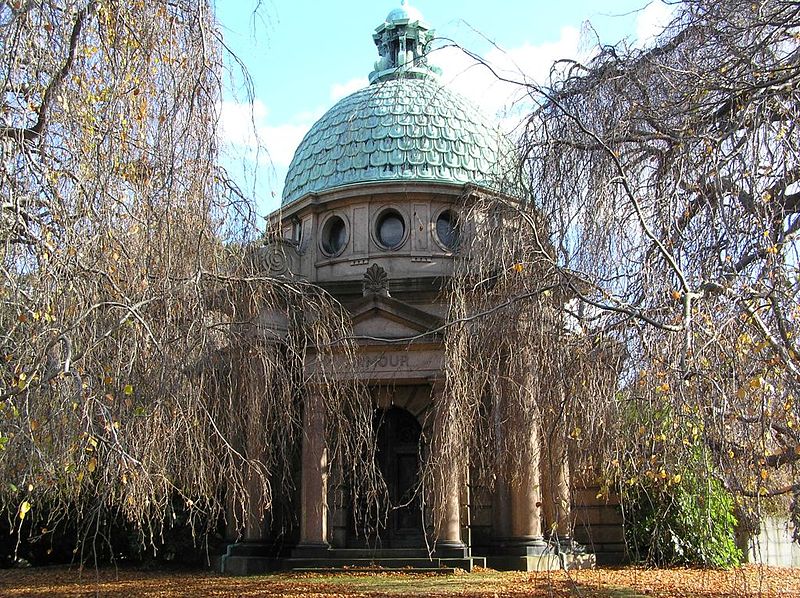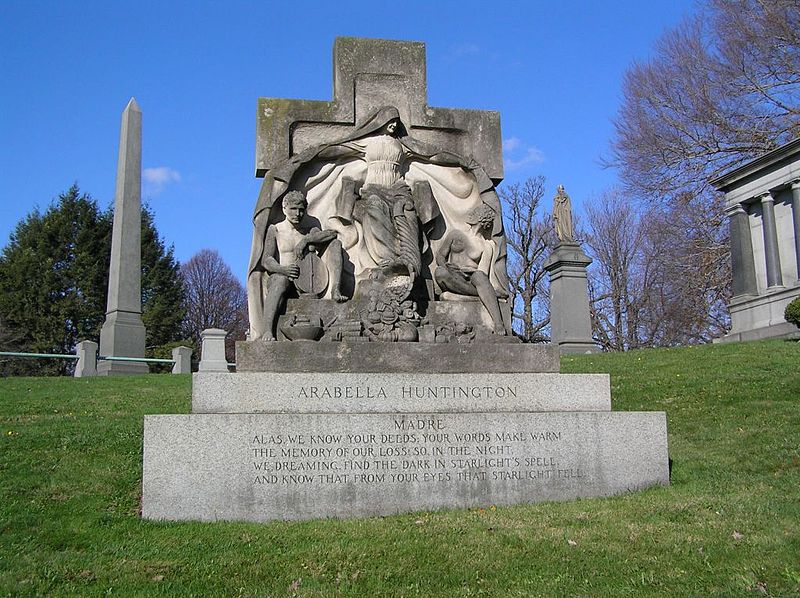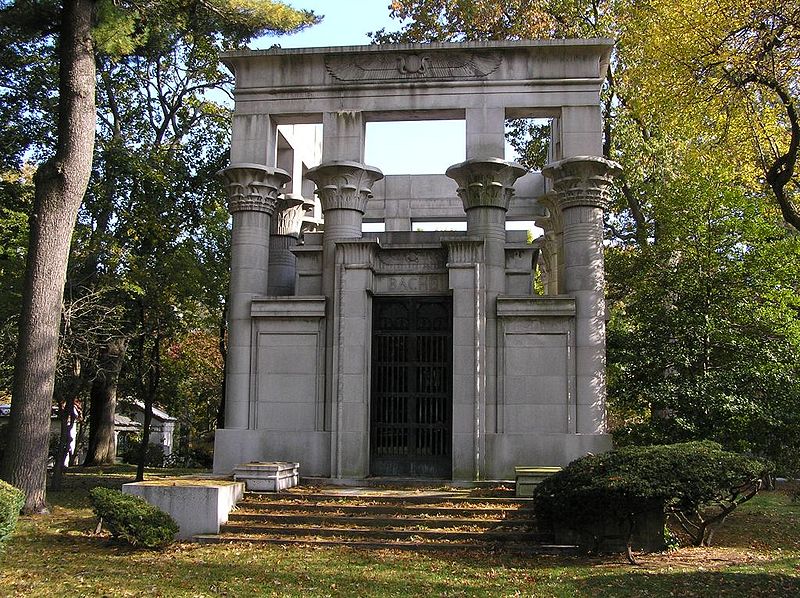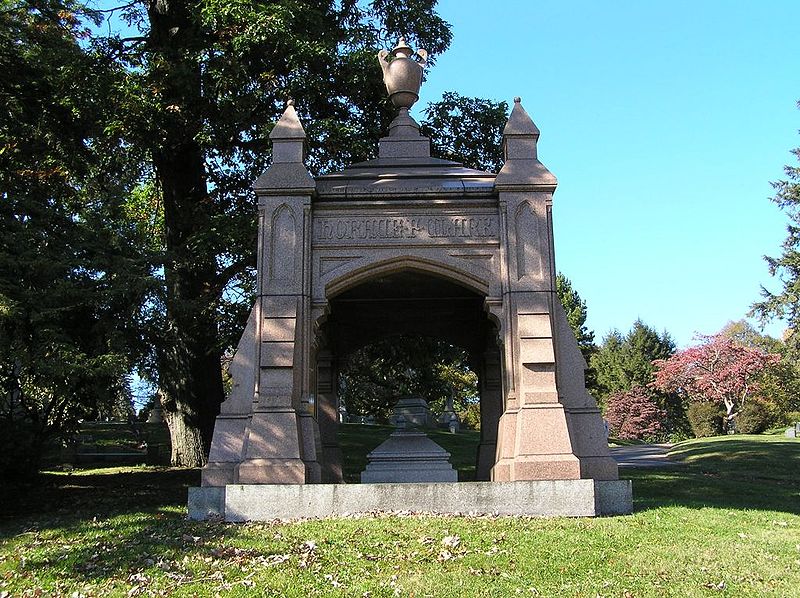Sometimes I find something in my reading that just makes me smile. With all the…noise going on right now, it’s always good to know that some people and institutions are plugging away, helping other people.
Woodlawn Cemetery in the Bronx, New York City, opened in 1863 with its first burial in January of 1865. Spanning more than 400 acres, over 300,000 people have been laid to rest within its borders. Among those are stars of music, the arts and business. As such, many of the monuments and mausoleums were designed by famous artisans and architects of their day. Today, more than 150 years later, Woodlawn Cemetery includes over 1,300 mausoleums and more than 150,000 stone monuments, made from a variety of stones including granite, marble, limestone and slate.

The mausoleum of Herman Armour in Woodlawn Cemetery, Bronx, NY. Photo by Anthony22 via Wikimedia Commons
Although Woodlawn is still an active cemetery, time and weather have their effects on older stone monuments. As with all old cemeteries, families move away or die out and the expensive upkeep for the monuments is left to the cemeteries.

The monument of Arabella Huntington in Woodlawn Cemetery, Bronx, NY. Photo by Anthony22 via Wikimedia Commons
In 2015 the Woodlawn Conservancy (which has an incredible website) partnered with the World Monuments Fund and collaborated with the International Masonry Institute and other organizations. They started a two-year project, internships for at-risk youth ages 18-24. The interns learn how to safely analyze, clean, repair and restore monuments through classroom lessons, hands-on experience and visits to stone quarries.

The mausoleum of Jules Bache in Woodlawn Cemetery, Bronx, NY. Photo by Anthony22 via Wikimedia Commons
They not only learn a new skill, but have the opportunity to work on architecture from many different eras. In many cases, these are kids who may not otherwise have seen the value of history. They’re not just learning about stone, but about life.
Of those who successfully complete the program, a limited number are offered apprenticeships, but all now have skills and contacts with the International Masonry Institute. From what I understand, masons and other craftspeople who understand the preservation arts are in high demand.
History and art presented to a new audience. See, happy stuff.

